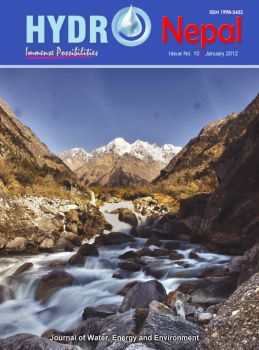The Potential Role of Water Hyacinth in Wastewater Treatment in Nepal
DOI:
https://doi.org/10.3126/hn.v10i0.7101Keywords:
Wastewater, water hyacinth, hydraulic retention time, treatment, control, NepalAbstract
River pollution is one of the significant environmental problems in Nepal. It is primarily due to the direct discharge of sewage from semi-urban and urban areas. The situation is widespread in Kathmandu Valley where the few wastewater treatment facilities are either inefficient or abandoned and modern wastewater treatment facilities are too expensive. The water hyacinth is known as the world’s most unwelcomed flora due to its invasive nature. However, numerous studies revealed many beneficial aspects of the plant species. The plants have already been widely used for different purposes like composting, substrate for mushroom farming, nutritious food for cattle, feed for biogas generation, protein synthesis, fibres for furniture, and for wastewater treatment, etc.
This study investigates the possibility of water hyacinths in wastewater treatment in Nepal. Concentration reduction in BOD5, TN, TP, FC were analyzed weekly for four weeks, and the reduction efficiencies compared with systems without water hyacinth. The experiment resulted in a clear reduction of pollutants/nutrients in the water hyacinth treatment system compared to the system without water hyacinth. In addition, the water hyacinth treatment system was able to remove odour and colour completely, which made the system comparatively advantageous over the system without water hyacinth. It will be beneficial to upgrade existing sewage lagoons in Nepal into water hyacinth systems.
DOI: http://dx.doi.org/10.3126/hn.v10i0.7101
Hydro Nepal Vol.10 January 2012 36-41
Downloads
Downloads
Published
How to Cite
Issue
Section
License
The copyright of the articles and papers published is held by HYDRO Nepal Journal.
The views and interpretation in this journal are those of author(s), and HYDRO Nepal does not bear any responsibility for the views expressed by authors in the journal.




